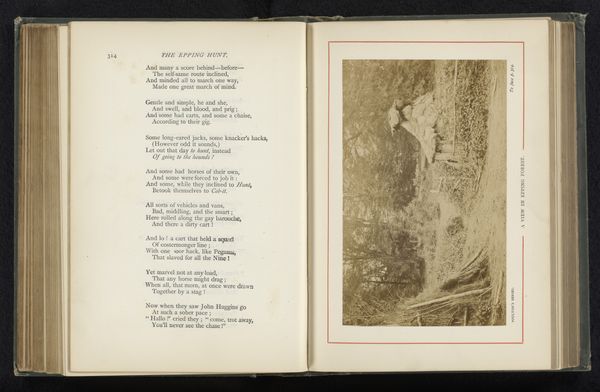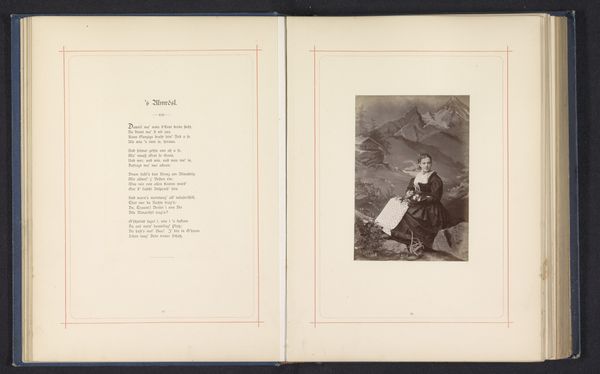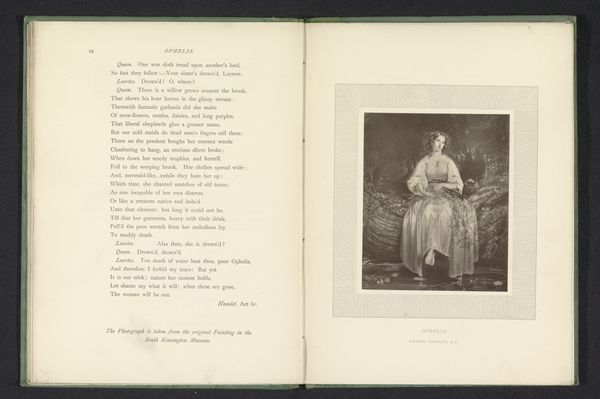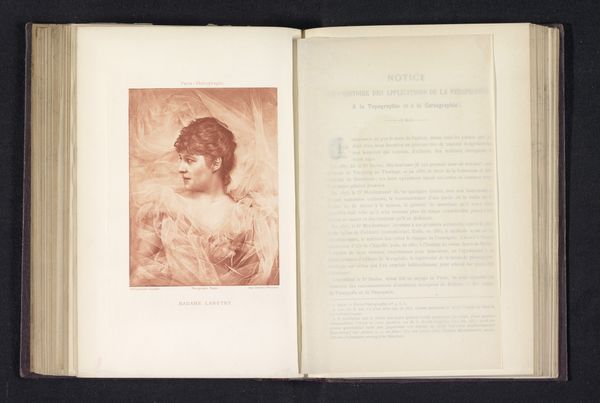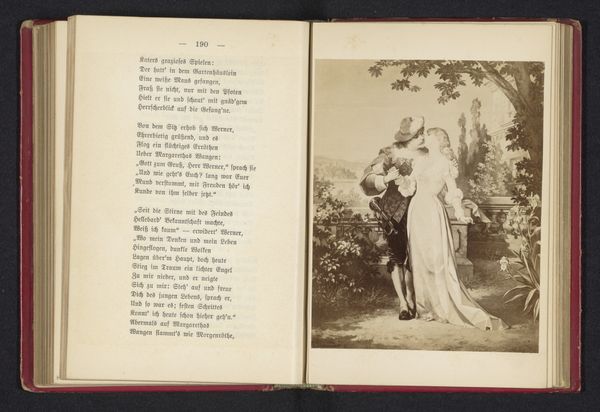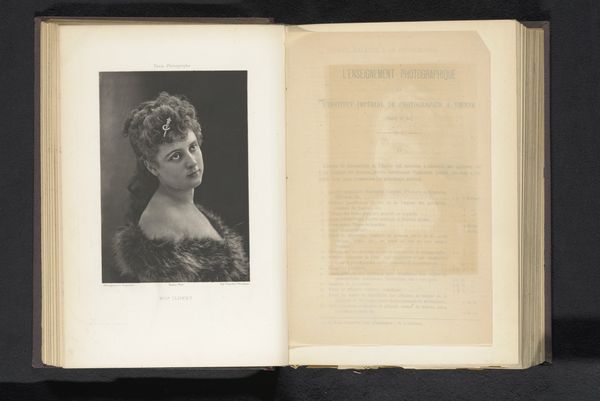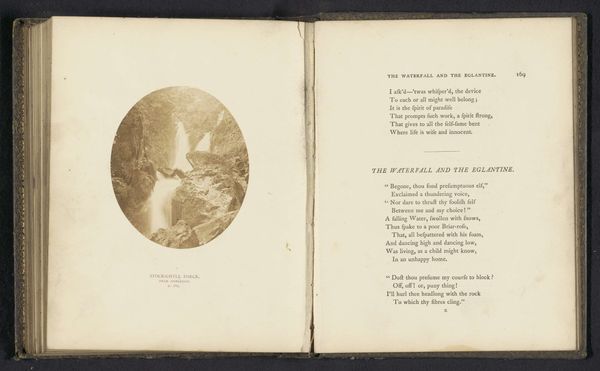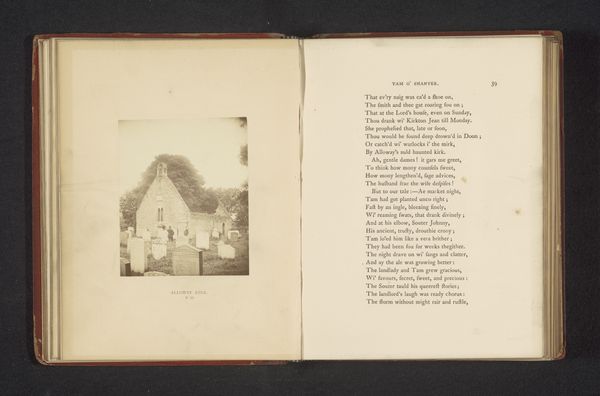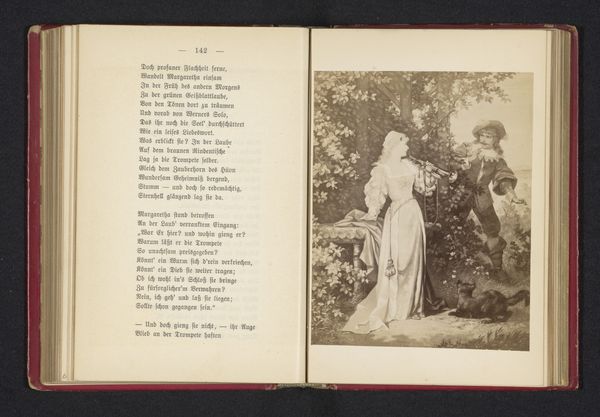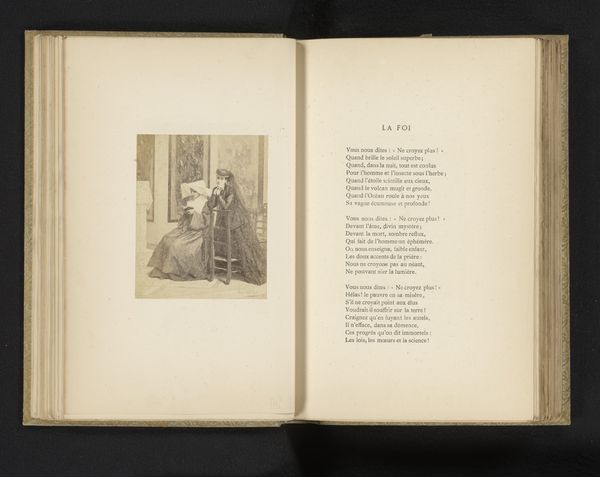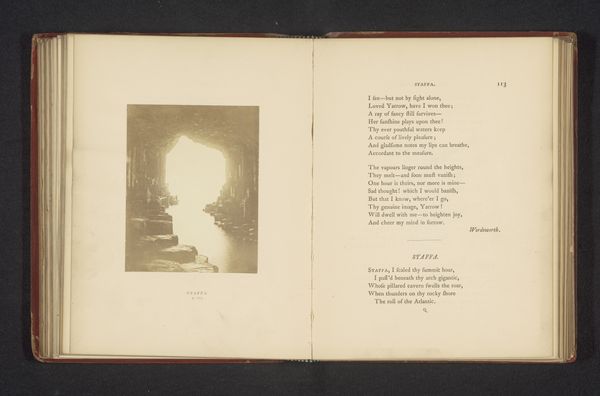
#
aged paper
#
homemade paper
#
paperlike
#
sketch book
#
hardpaper
#
personal sketchbook
#
journal
#
thick font
#
paper medium
#
historical font
Dimensions: height 114 mm, width 91 mm
Copyright: Rijks Museum: Open Domain
Curator: We’re looking at a photographic portrait from before 1883, titled “Portret van Sophie Eyre” and attributed to The St. James’s Photographic Company. Editor: It has such a hushed, sepia quality, doesn't it? The lace collar and elaborate hairstyle feel so contained, and yet, somehow extravagant for such a solemn portrait. Curator: Absolutely. Photography was becoming more accessible at this time, offering a new way for individuals to document themselves and project an image to society. Portrait studios, like St. James's, thrived by catering to this desire for visibility, carefully staging these representations of status and respectability. The placement opposite the poem enhances that reading. Editor: It’s a clever mirroring in terms of composition: you’ve got text on one side and an image of the sitter on the other. And then both share an ornate border as framing devices, though with differing degrees of complexity. How interesting it is to juxtapose two kinds of portraits of someone named, if I am reading it correctly, "Miss Sophie Eyre." I am captivated by the overall texture and tone. There's a density, almost a paper-like quality to it, that feels both sturdy and delicate. Curator: The very act of publishing such portraits within a book served as an extension of that social performance, inscribing Miss Eyre into a network of literary and cultural associations. This portrait signifies her entry into a certain class and cultural sphere. And with that, there is the use of script which helps to suggest social standing too, both on the page and underneath the sitter's image. Editor: Thinking about that staging and framing, you've also got a very strong play of light and shadow working. The photographer directs our eye toward Sophie's profile, where her expression feels rather mysterious and withheld. Curator: Exactly. By studying images like this we glimpse the social and visual dynamics that shaped Victorian society, particularly the ways individuals navigated public perception. It makes you think about the theatricalisation of the subject within the portrait in and of itself. Editor: This reminds me that an aesthetic approach can only enrich how one might discuss history—even that of portraiture.
Comments
No comments
Be the first to comment and join the conversation on the ultimate creative platform.
